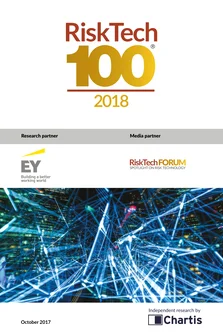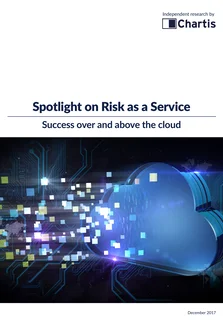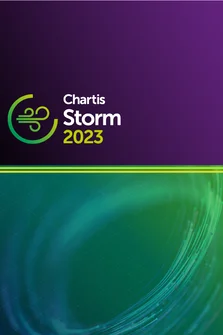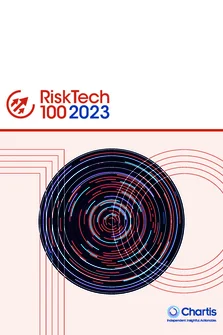<div class="WordSection1">
<h3>It’s complicated</h3>
<p>Key characteristics of buy-side firms’ business models – their billing and operating strategies, for example – make them particularly well-suited to Risk as a Service (RaaS). In fact, rather than being a recent trend, RaaS has become a relatively routine way to deliver risk management solutions to buy-side firms.</p>
<p>Part of the reason for the strong link between RaaS and the buy-side is that the provision of RaaS emerged out of long-standing relationships between buy-side institutions and other entities (such as banks or brokers) that provided them with software and services. Over time, these relationships gradually developed to encompass risk and related systems and services.</p>
<p>In recent years, however, despite being well- established, the RaaS market has been in a state of evolution and change. This occurred for a number of reasons. A range of new players is entering the space, keen to capitalize on the buy- side opportunity; new types of risk platforms and providers are also emerging; and buy-side firms have new cost pressures and structural shifts to contend with.</p>
<p>As a result of these factors, the RaaS space is now very complex, with a huge cast of characters from a variety of backgrounds, offering a wide variety of solutions. A plethora of entities (including market data providers, providers of Execution Management Systems [EMS] and Order Management Systems [OMS], exchanges and security servicing platforms) play in the market, operating complex networks of ‘pipes’ – relationships based on the supply and use of software and connectivity rather than purely commercial connections. And as history has shown, expanding an existing relationship – enhancing one that provides market data or order management so that it supplies risk management and performance analytics, for example – is also a relatively simple thing to do, especially when compared to building and developing these relationships from the ground up. Not surprisingly, this approach has become a growing area of competitive differentiation for vendors. And on the buy-side, the value of such technology-based relationships (i.e. between client and vendor) cannot be underestimated.</p>
<p>This new complex environment brings challenges and opportunities. To fully make sense of it, all participants must understand the broader buy-side context and the wider pool of available suppliers it represents. In effect, anyone who supplies risk systems – including firms that have emerged from the areas of market data or financial services – can now be a supplier. Essential to this understanding is appreciating and exploiting the ecosystem of connections and relationships that already exist in the RaaS landscape. RaaS is all about history – the key ingredient to success is not manufacturing new RaaS offerings, but making better use of what already exists in the space. In fact, both buy-side firms and vendors will clearly see that the notion of ‘RaaS’ as a <em>new </em>delivery model driven by emerging technologies is largely a myth.</p>
<h3>The vendors’ quandary</h3>
<p>For vendors this is an important consideration, and a source of great advantage to those that heed it. Buy-side firms tend to be conservative in their choice of solution, preferring firms with a strong intellectual heritage that are traditionally strong in providing services for the buy-side, rather than new, perhaps untested, options. Those vendors that have offered generic functionality, without carefully considering the context in which buy-side firms use it, have tended to struggle.</p>
<p>The current market for RaaS on the buy-side is dominated by large, complex and powerful players with interests in many areas and across many value chains. Those RaaS providers that have enjoyed most success (such as exchanges or providers of EMS/OMS) tend to have firm roots in specific market segments, originating in the areas of market data or trading systems, with existing pipes, infrastructure and strategies. The key for newer and/or smaller vendors is to focus on crucial niches where their capabilities and functionality are market-leading, and/or where they have very strong Intellectual Property (IP).</p>
<p>Chartis believes that buy-side firms prefer to acquire tools from vendors with one or all of the following:</p>
<ul>
<li>Pre-existing pipes/connections/networks.</li>
<li>A strong intellectual and cultural heritage.</li>
<li>Packaged data and analytics.</li>
</ul>
<p>Almost all vendors, we believe, will achieve the third option – although for long-standing on- premise vendors, packaging data tightly with analytics is a challenge, because their business models do not fit this approach.</p>
<p>Ultimately, these could be crucial deciding factors in who succeeds with RaaS, and who does not.</p>
<p>This report expands on our <em><a href="/other/regulatory-compliance-reporting/spotlight-risk-service-1195">Spotlight on Risk as a Service</a> </em>(published at the end of 2017), and on some of the themes explored in our industry report <a href="/data-management/hedge-fund-risk-management-technology-10406"><em>Hedge Fund Risk Management Technology 2018</em></a>. In it we consider the reasons why buy- side firms employ the service/managed service model, and the various approaches, alternatives and critical structural changes that have had an important influence on the supply side.</p>
<p>This report uses Chartis’ RiskTech Quadrant<sup>®</sup> to explain the structure of the market. The RiskTech Quadrant<sup>®</sup> uses a comprehensive methodology of in-depth independent research and a clear scoring system to explain which technology solutions meet an organization’s needs. The RiskTech Quadrant<sup>®</sup> does not simply describe one technology solution as the best risk-management solution; it has a sophisticated ranking methodology to explain which solutions would be best for buyers, depending on their implementation strategies.</p>
</div>
<div class="WordSection2">
<p>The RaaS landscape is large and complex, with hundreds of providers and a myriad of different solutions. Our goal in this report is to provide as accurate and valuable an analysis of it as possible within the constraints of our research process.</p>
<p>Reflecting our view of the market, we have selected what we believe to be a representative cross-section of vendors for our quadrant. These are: Axioma, BlackRock Solutions, Bloomberg, CloudAttribution, FactSet, FINCAD, FIS, Hanweck, IBM, ICE, Imagine Software, ION Trading, KDS Global, London Stock Exchange Group, Moody’s Analytics, Morningstar, MSCI, Murex, Nasdaq, Numerix, Oracle, PortfolioScience, Quantifi, Refinitiv (formerly Thomson Reuters), RiskSpan, RiskVal, SIX Securities Services, SS&C, StatPro, swissQuant, Trepp and TriOptima.</p>
</div>
<p> </p>
Only users who have a paid subscription or are part of a corporate subscription are able to print or copy content.
To access these options, along with all other subscription benefits, please contact info@risk.net or view our subscription options here: http://subscriptions.risk.net/subscribe
You are currently unable to print this content. Please contact info@chartis-research.com to find out more.
You are currently unable to copy this content. Please contact info@chartis-research.com to find out more.
Copyright Infopro Digital Limited. All rights reserved.
As outlined in our terms and conditions, https://www.infopro-digital.com/terms-and-conditions/subscriptions/ (point 2.4), printing is limited to a single copy.
If you would like to purchase additional rights please email info@chartis-research.com
Copyright Infopro Digital Limited. All rights reserved.
You may share this content using our article tools. As outlined in our terms and conditions, https://www.infopro-digital.com/terms-and-conditions/subscriptions/ (clause 2.4), an Authorised User may only make one copy of the materials for their own personal use. You must also comply with the restrictions in clause 2.5.
If you would like to purchase additional rights please email info@chartis-research.com





